A wild Wyoming fox has been a focus for photographers during the late winter season. With great spirit and capability, he demonstrates the art of survival. Using only three legs, he navigates the last months of Wyoming's winter.
Adaptability. That, in essence, is the fox's gift.
Those who were able to view this fox were rewarded, capturing this opportunistic hunter as he used his amazing eyesight and senses of smell and hearing to locate his prey.
Red Fox Image #1 of 7
A gorgeous fox was captured by photographers one week on the Wyoming landscape. “This beautiful fox was the most successful hunter I’ve ever seen, pouncing through the snow and catching his quarry one after another. Watching him, we couldn’t tell that he’d endured a physical trauma and lost a leg. His success did not require four legs, only what a fox does so well. I like the name “Gitzo” given to him by @savannahrosewildlife. Sadly, it is likely that he was caught in a trap and had to chew his leg off, an unimaginably horrific experience to endure.” @jacobpaulphoto
“The physical fox – the frame that supports this curious, intelligent, beguilingly strange canid lifeform – is complex. That frame is aesthetically pleasing to many human observers, but our perception of beauty is irrelevant to the creature itself. It is the demands of survival that have whittled the fox’s senses, size, bone structure, brush shape and teeth.” “The Hidden World of the Fox” by Adele Brand
Photo Gallery
Click to see larger imagesExcelling at Survival: Not just for fox.
This stunning fox isn’t the first wild animal surviving without a leg and he will not be the last. @MelissaGroo, a nature photographer and conservationist, reported that while she photographed a bobcat hunting a vole, it also proved to be a remarkable three-legged master of survival.
“In amazement I turned my car off and sat and quietly watched, my long lens resting on the windowsill. The resting bobcat got up and began to move and I realized with shock that he was missing half his front left leg. My mind began to race, wondering how I might be able to assist this bobcat, find a local rehabber, etc. Suddenly, he assumed a hunting position, his body crouched and tense, his gaze fixed intently on something I couldn’t see. I quickly raised my shutter speed hoping I could get a sharp shot of him leaping. And leap he did, in the most dramatic arc I’ve ever seen an animal make. And he got his vole. He quickly scarfed it down, stood up and walked away. It was obvious this was no recent injury. He had learned to adapt to it, and make a life for himself despite his handicap. I was in awe of his spirit. I’ll never forget it. I will never know, but I feel pretty sure his injury is from a steel jaw leghold trap, legal in most states. The animals are skinned, their pelts sold. It means an excruciating, slow death for those trapped in these devices. Some animals chew their leg off to escape. I think it’s time to ban these traps; they are barbaric and cause tremendous suffering. If you agree, find out who in your state is working on this issue and lend your voice. Follow orgs like @wyominguntrapped that fight for humane treatment of our wild neighbors. Note: I am not anti-hunting. I believe ethical, sustainable hunting for food is more humane than factory farming. What I am against is human cruelty, and animal suffering. Everyone has their passions. These are mine.”
Fox Features:
- Adult males weigh 11–12 pounds; females weigh average 10 pounds.
- Average 43 inches long.
- Average life span: 3–7 years; up to 11 years in Yellowstone.
- In northern range, home range averages 3.75 square miles, with males having
slightly larger range than females. - Several color phases; usually red fur with white-tipped tail, dark legs; slender, long snout.
- Barks; rarely howls or sings.
- Distinguish from coyote by size, color, and bushier tail.
- Solitary, in mated pairs, or with female from previous litter.
- Prey: voles, mice, rabbits, birds, amphibians, other small animals.
- Other food: carrion and some plants.
- Killed by coyotes, wolves, mountain lions.
Straight Talk from Fox
From Redbird by Mary Oliver
Listen says fox it is music to run
over the hills to lick
dew from the leaves to nose along
the edges of the ponds to smell the fat
ducks in their bright feathers but
far out, safe in their rafts of
sleep. It is like
music to visit the orchard, to find
the vole sucking the sweet of the apple, or the
rabbit with his fast-beating heart. Death itself
is a music. Nobody has ever come close to
writing it down, awake or in a dream. It cannot
be told. It is flesh and bones
changing shape and with good cause, mercy
is a little child beside such an invention. It is
music to wander the black back roads
outside of town no one awake or wondering
if anything miraculous is ever going to
happen, totally dumb to the fact of every
moment’s miracle. Don’t think I haven’t
peeked into windows. I see you in all your seasons
making love, arguing, talking about God
as if he were an idea instead of the grass,
instead of the stars, the rabbit caught
in one good teeth-whacking hit and brought
home to the den. What I am, and I know it, is
responsible, joyful, thankful. I would not
give my life for a thousand of yours.
Red Fox Image #2 of 7
“Foxes are guided by their hearing, which is sensitive to a degree that human imaginations might leave short. A fox can hear a much wider range of frequencies than us. Their eyesight is much weaker than ours, but photographing a fox at night with a flash uncovers one of its ocular secrets. Unless you are very careful or fortunate, the resulting image will feature a colored washout of the animal’s eyes. The culprit is the tapetum lucidum, a remarkable layer of tissue directly behind the retina. It reflects visible light back through the retina, effectively brightening the world for its owner. “The Hidden World of the Fox” by Adele Brand
*Red fox season in Wyoming is year long. Considered as predatory animals, red foxes can be shot, trapped, snared, or killed in any manner every day of the year. There are very few safe places for protection against human-caused mortalities. We are far from being a humane world.
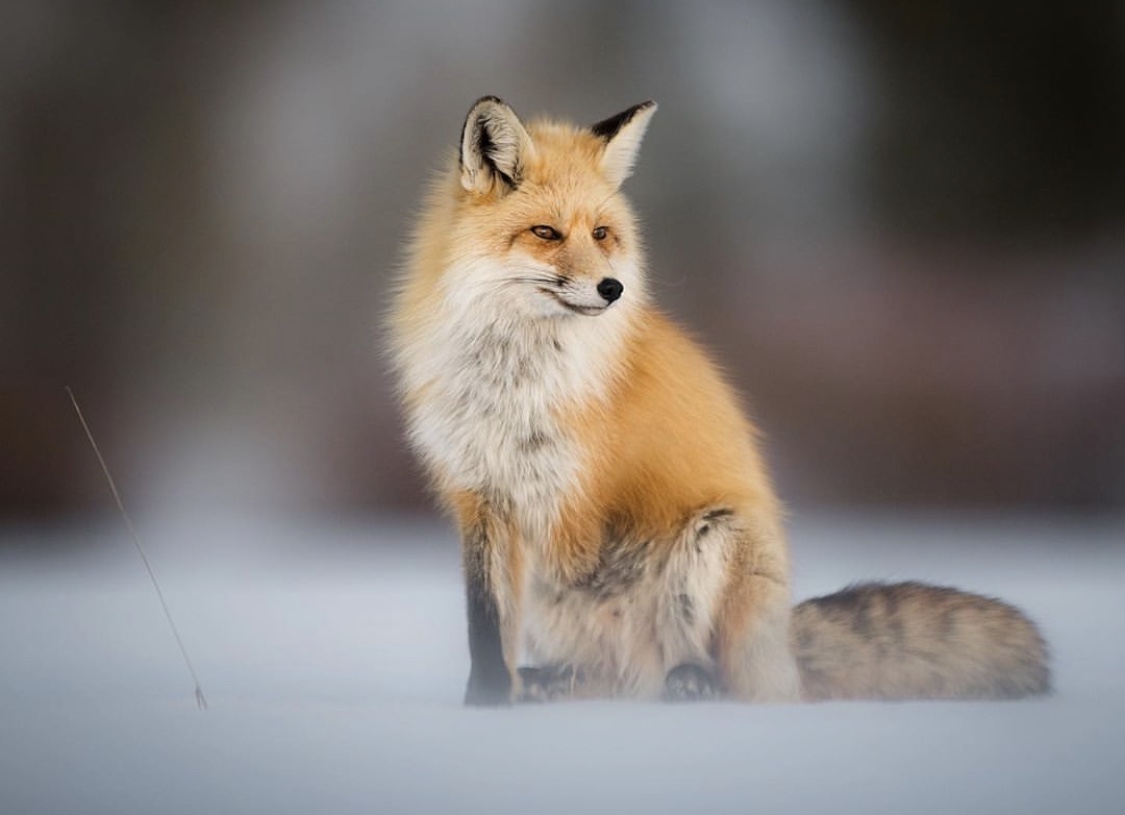
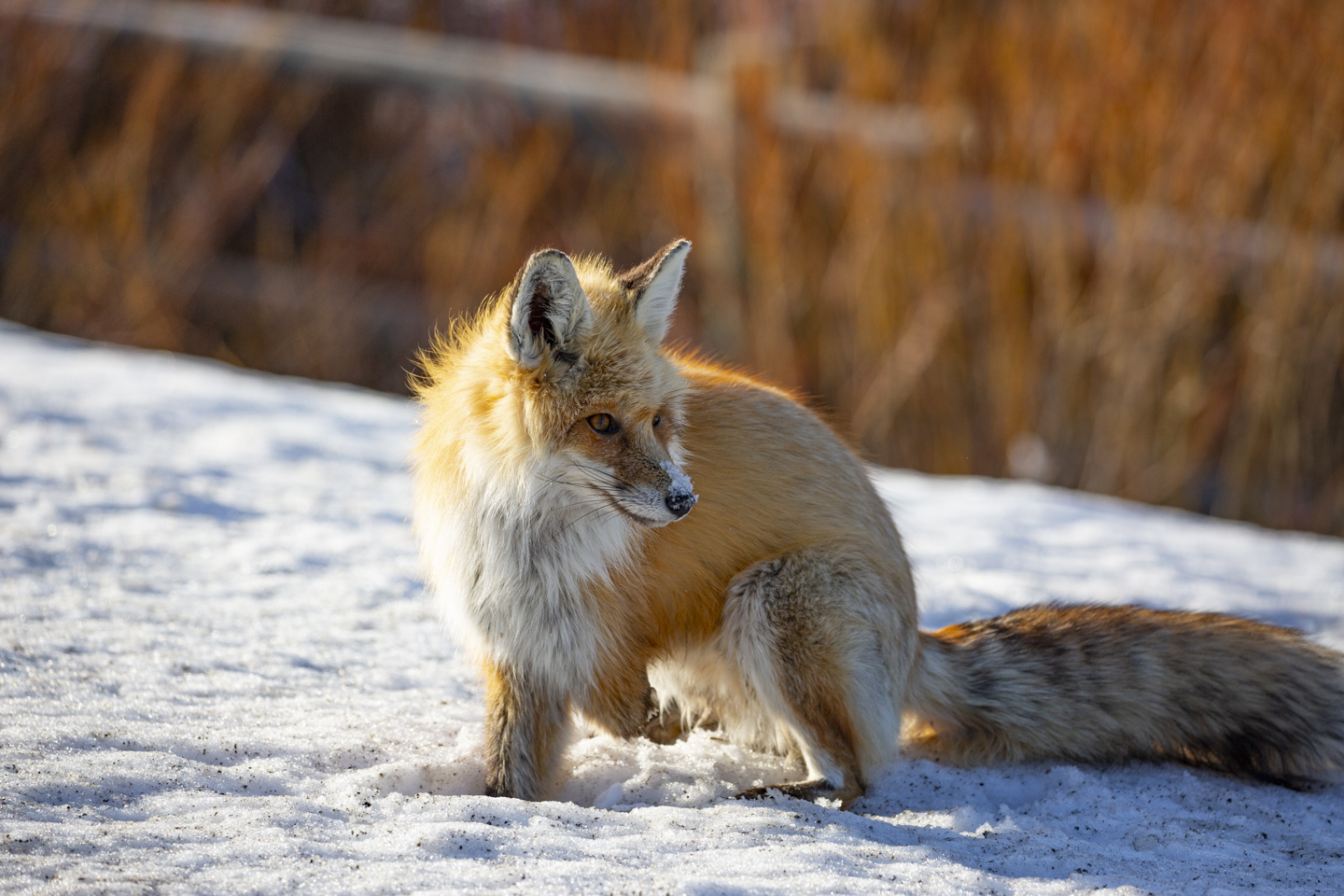
Red Fox Image #3 of 7
“What has emerged is almost the perfect formula: a carnivoran that is omnivorous – a generalist – yet which still carries a specialist’s trump card. As we have already seen, the fox can survive almost anywhere, and on a mind-bogglingly diverse array of food; but for all its catholic tastes, it has never lost its finesse in hunting rodents. Much of what we admire about the fox is a direct adaptation to the challenge of catching such small, swift prey. In a very real way, foxes are built around mice.” “The Hidden World of the Fox”, by Adele Brand.
*Steel leg-hold and padded-jaw traps baited with a scent attractive to foxes or other predators are used. Animals are usually killed with a blow to the head, shot, or suffocating by a foot on the chest. Steel leg-hold traps are banned on public lands in some states.”
*Fox’s paws when caught in leg-hold traps can freeze if windchill dips to -10F or below. ”Typical foothold traps and snares often produce some level of complete or partial restriction of blood flow to the limb distal to the mechanism and/or damage at some level to the tissues at the gripping point. Adding extreme hypothermic conditions would presumably make the situation worse.” Winston Vickers, DVM, MPVM, Associate Veterinarian, Wildlife Health Center, UC Davis
It is highly likely that a leg-hold trap or snare was the cause of the loss of the fox’s leg.
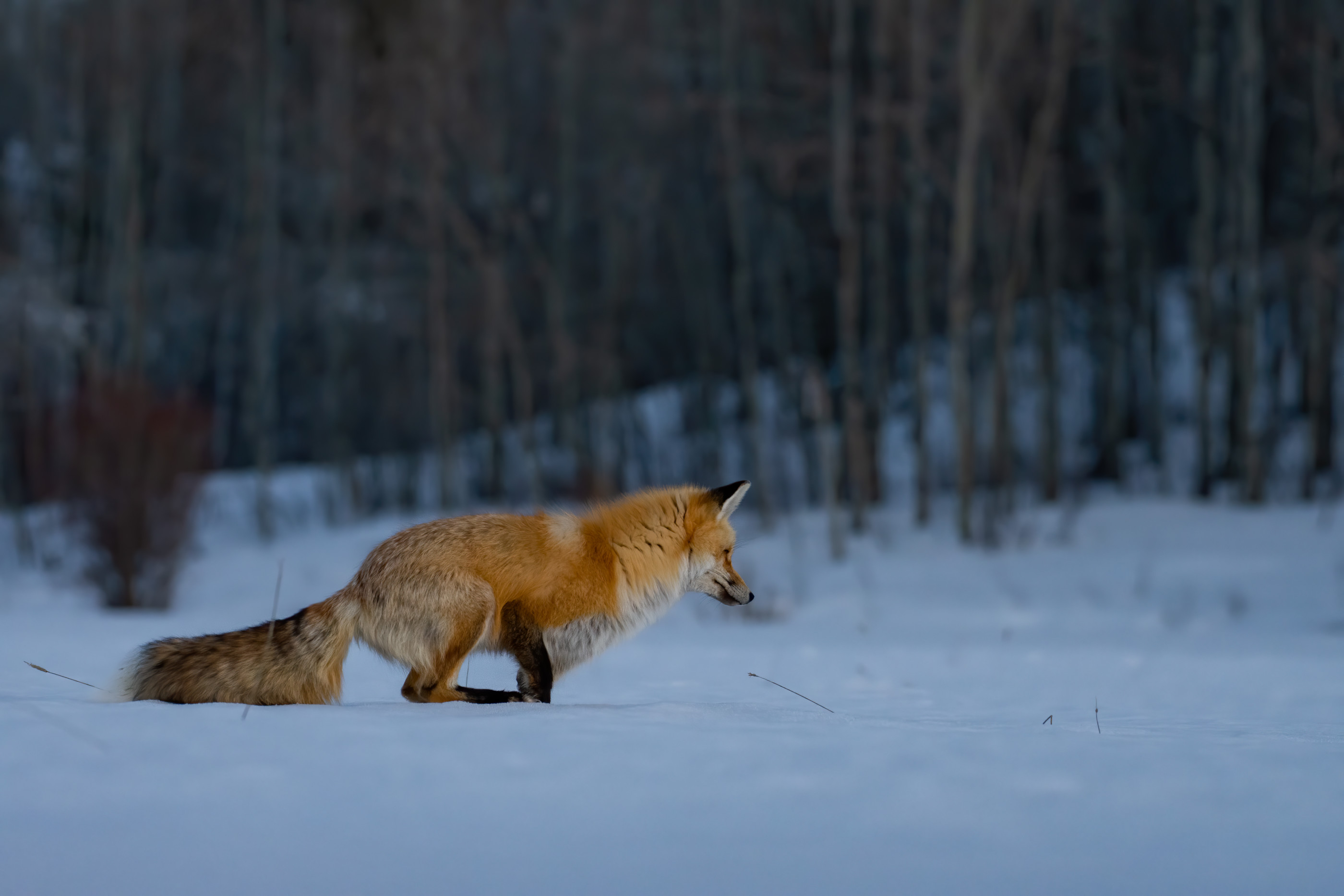
Trapping is:
Incorrect, mistaken, unsound, inappropriate, unsuitable, erroneous, inept,
undesirable, amis, awry, faulty, flawed, defective, illicit, dishonorable, corrupt,
unethical, immoral, bad, wicked, sinful, nefarious, reprehensible.
– Bruce Thompson
“A fox that is stealthily approaching its intended meal will be most successful if it orientates itself either within about 20 degrees of the magnetic north, or due south, at least according to one recent study. Leaps from other directions usually ail to pin the prey. If foxes are indeed capable of magnetoreception, the mechanism by which they perceive the direction of the magnetic poles is unclear. The authors of this study speculate that foxes perceive the geometric filed as an area of light or shade in their vision.” “The Hidden World of the Fox, by Adele Brand
*Each year, foxes are caught in traps (leg-hold traps, snares, drowning traps) for their fur. Often left for days, unable to seek shelter, food or water, these animals can cause serious injury to themselves in an attempt to escape. When the trappers finally arrive, they will often stomp or beat the animals to death.
*A ban of fur in California comes on the heels of similar bans in Los Angeles and San Francisco. As other US cities are preparing similar bills, the California statewide ban is expected to be a game-changer and spur more fur-free action across the US. This ban underscores the point that today’s consumers simply don’t want wild animals to suffer extreme pain and fear for the sake of fashion.
Red Fox Image #5 of 7
“Imagine that you need to catch a rodent in dense cover. The rodent, naturally, does not want to be caught, and is equipped with formidable defensive senses of its own. It may also have awkward behaviors; bank voles, for example, reduce their activity upon detecting fox scent, for the rustles of their feet on vegetation are, perhaps aptly, their Achilles heel.” “The Hidden World of the Fox” by Adele Brand.
*A trapping license is not required to trap foxes (predatory animals). A trap and an ID are the only requirements to take an unlimited number of animals, all year long.
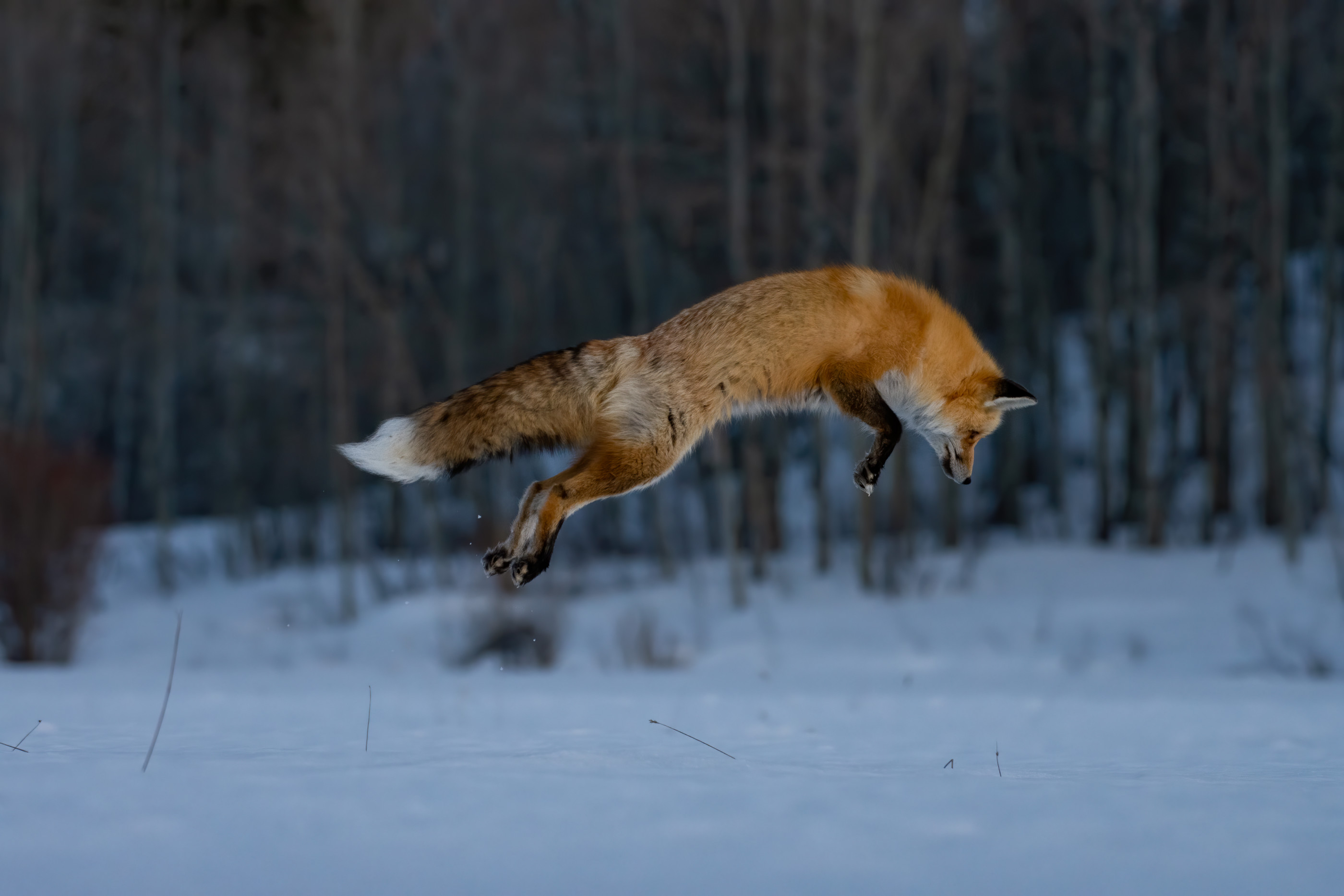
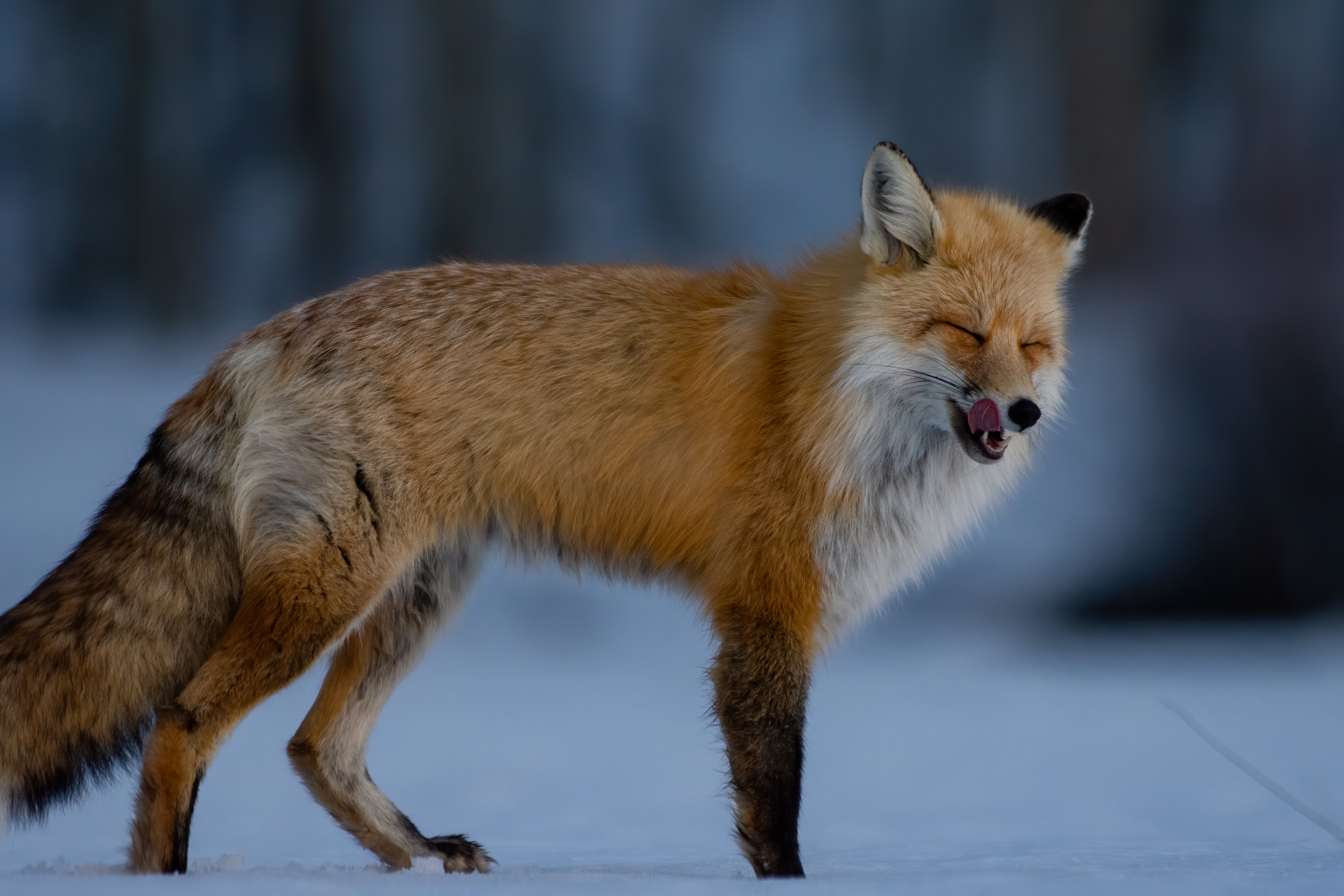
Red Fox Image #6 of 7
“On many occasions, the fox will have to work hard for its meal. One study found an average of seven attempted, mousing leaps per hunt, and the duration of the whole predation event varied from a few seconds to well over an hour.”
“They are splendid beings in their own right, who have evolved alongside us as co-inheritors of all the beauty and abundance of life on this planet”.
-Marc Bekoff
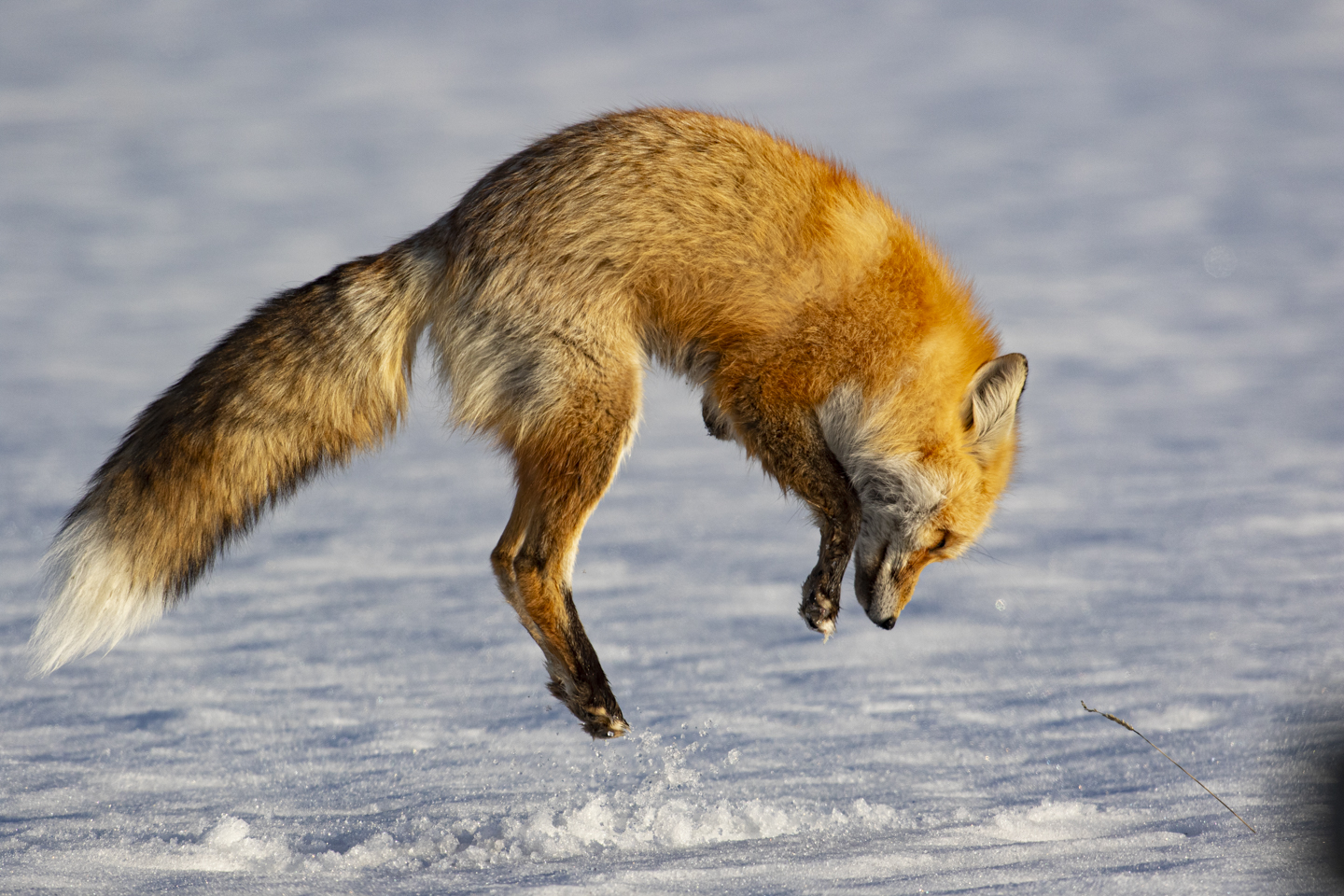
Red Fox Image #7 of 7
Foxes do make a single line of tracks when walking as “the hind track registers directly on top of the front”, but that when they go a little quickly as in a trot or gallop, they make different patterns. This means that the rear feet are placed almost directly in the corresponding impression of the front feet. If it is walking normally, an overstepped register or slight offset direct register occurs. The rear feet are placed on top of or forward of the front feet impressions.
*This wild red fox has survived to adapt to its own unique track. May it continue to live a long life, wild and free.
We believe that foxes should be preserved and protected for their ecological and intrinsic character on our landscapes, not hunted and killed on sight in unlimited quotas.
Photography has the power to shift our understanding of our wild Wyoming to build a healthy and thriving ecosystem that benefits the lives of everyone.
Thank you to the following photographers for graciously sharing high-quality images of this red fox “survivor”.
© Jeff Vanuga
Header Fox Image
www.jeffvanuga.com, @jeff_vanuga
© Savannah Burgess
Fox Images #1, #2
@savannahrosewildlife
© Jacob Krank
Photo Gallery, Fox Images #4, #5, #6
@jacobpaulphoto
© Henry H. Holdsworth
Fox Image #3, #7
wildbynaturegallery.com



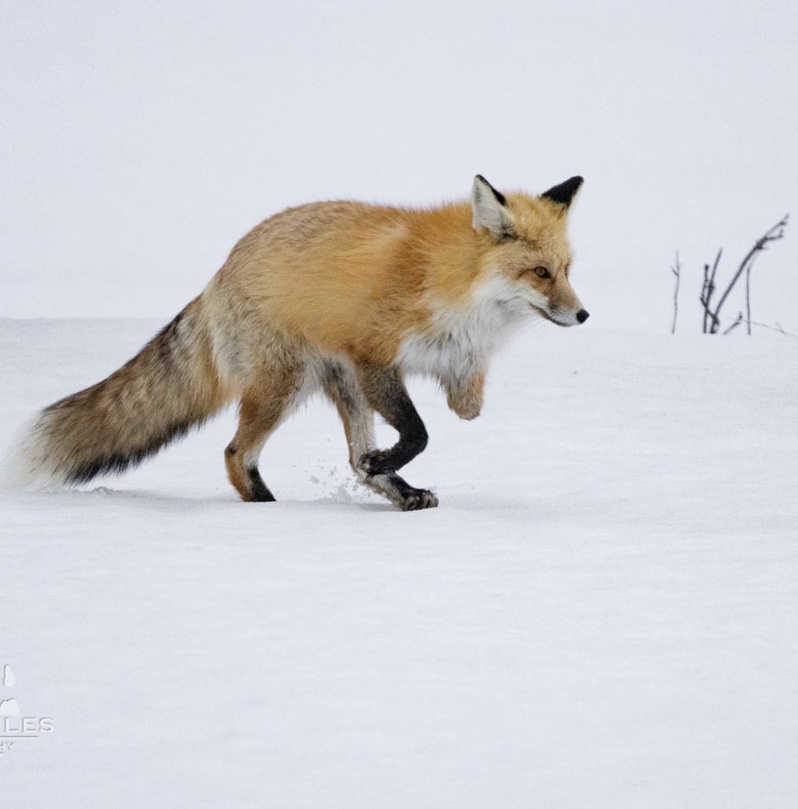
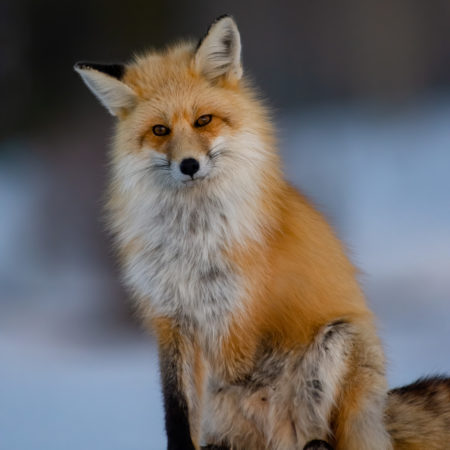
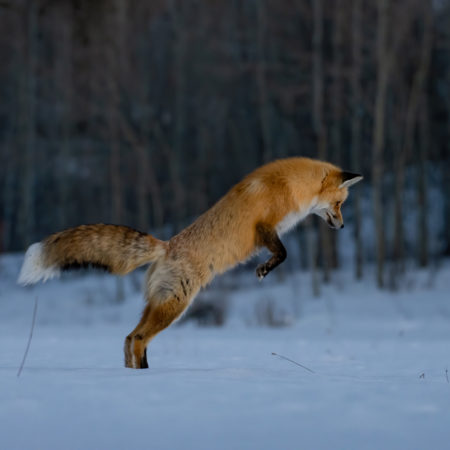
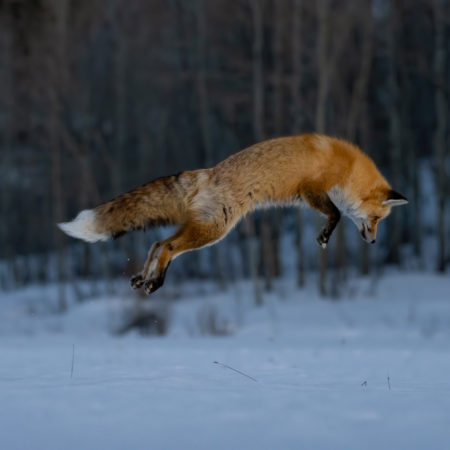
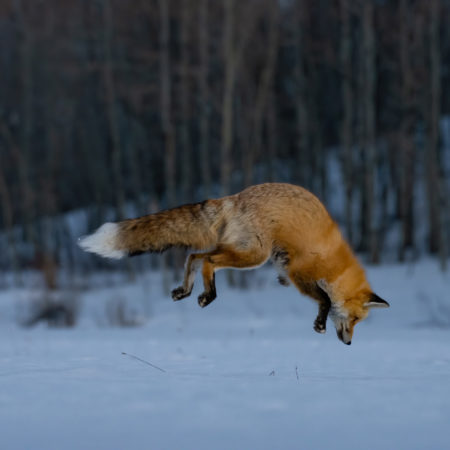
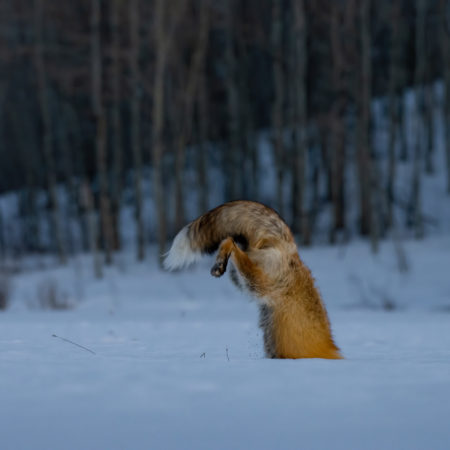
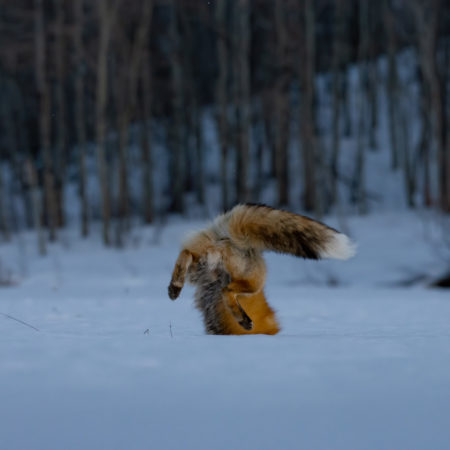
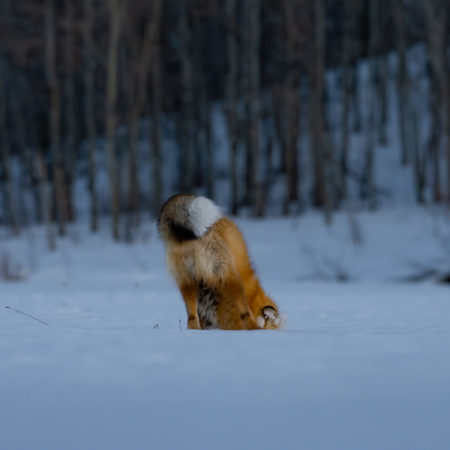
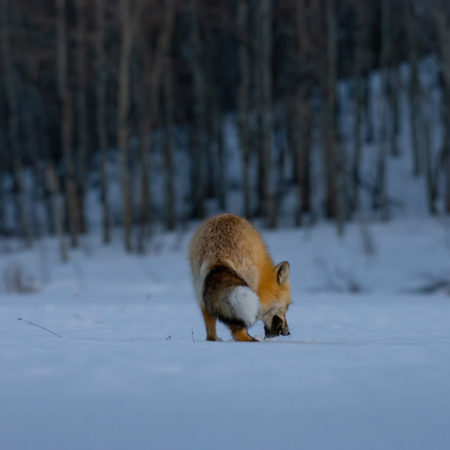
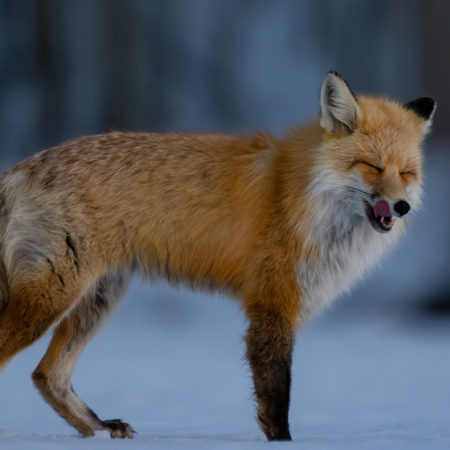
Simona Popescu
Beautiful pictures! They should stop the cruelty! They deserve a free life!✨
Patricia V. Vitoria
In wonder of their beauty and survival spirit! Appalled at the entrapment cruelty.
Denise
I couldn’t agree more, trapping is HORRIBLE AND CRUEL!
Koschka
What beautiful images of such a remarkable, absolutely stunning creature!! Trapping is an horrific abomination and must be stopped!
Joann L Smith
This is a magnificent window into the world of this fox. Thank you.
Elena
Traps should be illegal.. Wyoming closes its eyes to this needless cruelty (anyway are snares, traps, and shooting ever justified?..)
Amy Woodbury
Thank you conserving and capturing photos of this gorgeous beautiful inspiring fox. Wild animals deserve to be protected and respected. They are a blessing to this planet. They are just as important as we are.
What to Do If You See a Fox at Night: Safety Tips for Humans and Animals - Animalia Planet
[…] that captivates nature enthusiasts and casual observers. With their keen senses and remarkable adaptability, these cunning creatures easily navigate the darkness, making them the ultimate nighttime […]
Wyoming Untrapped
Thank you for sharing! These are valuable tips for learning to coexist with our wild neighbors.